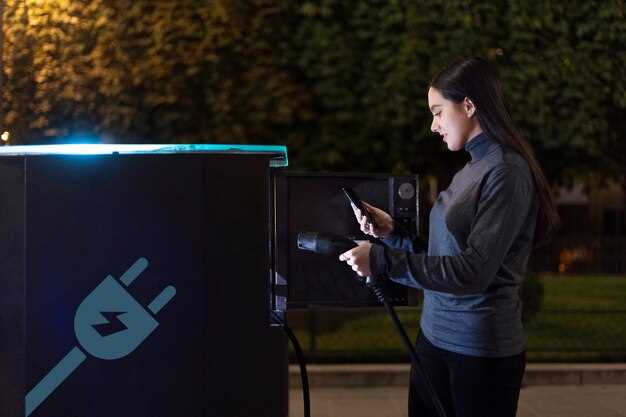
As the popularity of electric vehicles (EV) continues to soar, understanding the various connectors utilized by different models becomes increasingly vital for consumers and manufacturers alike. With multiple standards and formats available, selecting the right connector can significantly impact charging efficiency and compatibility. Each EV manufacturer often adopts specific charging technology, creating a diverse landscape of connectors across the industry.
In this article, we will explore the various charging connectors employed by leading electric vehicle models. From the ubiquitous Type 1 and Type 2 connectors commonly found in North America and Europe to the rapidly emerging CCS and CHAdeMO standards, we will outline how these technologies cater to different EV architectures and performance requirements. Understanding these distinctions not only aids in consumer choice but also influences infrastructure development and charging station deployments across the globe.
With the shift towards greener transportation solutions, the evolution of charging technology is crucial. By examining the landscape of EV charging connectors, we can appreciate how various models are designed to enhance user convenience and promote the widespread adoption of electric mobility. Stay tuned as we delve deeper into the intricacies of EV charging integration and its implications for future vehicle design.
Types of Charging Connectors in Chinese Electric Vehicle Models
Chinese electric vehicles (EVs) have gained significant popularity both domestically and globally. As the market expands, various charging connectors have emerged to accommodate different models. Understanding these connectors is essential for consumers and manufacturers alike.
One of the most common charging connectors used in Chinese EV models is the Type 2 connector. This connector is widely adopted for alternating current (AC) charging and is compatible with many European and international standards. It allows for a flexible charging experience, making it a preferred choice for overnight charging at home or at public charging stations.
Another notable connector is the GB/T connector, which is the standard charging interface in China. Designed specifically for local EV models, it includes both AC and DC charging capabilities. The GB/T connector has gained traction due to its governmental endorsement, ensuring that most Chinese manufacturers equip their vehicles with this type of connector to maintain compliance with national standards.
For fast charging, many Chinese EVs utilize the CHAdeMO connector, which initially originated from Japan. This connector is particularly effective for high-speed DC charging, allowing drivers to recharge their vehicles quickly at dedicated charging stations. Several Chinese manufacturers offer compatibility with CHAdeMO to cater to international markets or specific user preferences.
In addition, China’s growing electric vehicle market has seen the development of the CCS (Combined Charging System) connector. This system integrates AC and DC charging into a single connector, streamlining the charging process for users. While not as prevalent as GB/T or Type 2, CCS is gradually gaining acceptance among high-end Chinese models aiming to meet global standards.
In summary, the landscape of charging connectors in Chinese electric vehicle models is diverse and evolving. With the rise of domestic and global demand for EVs, understanding these types of connectors is crucial for enhancing the user experience and facilitating the transition to electric mobility.
Compatibility of EV Connectors with Global Charging Standards

The compatibility of electric vehicle (EV) connectors with global charging standards plays a crucial role in the widespread adoption of electric mobility. Different regions and manufacturers use various connector types, which can complicate the charging landscape for users. In particular, Chinese EV models increasingly rely on their own standards while also adapting to international norms to facilitate cross-border usage.
One of the primary standards in the global EV market is the Combined Charging System (CCS), which is commonly used in Europe and North America. This standard supports both AC and DC charging, allowing for versatile charging solutions. Many manufacturers are moving towards this connector type to enhance compatibility with charging infrastructure worldwide.
In contrast, Chinese manufacturers have developed their own specifications, such as the GB/T connector, which caters specifically to the domestic market. This model has gained significant traction within China, as the country remains one of the largest markets for electric vehicles. However, as Chinese EV makers expand to international markets, there is a push to ensure that their vehicles can accommodate globally recognized connectors like CCS or CHAdeMO.
The integration of various charging standards presents challenges, but it also encourages the development of adapter technologies that allow EVs with different connectors to utilize a more extensive network of charging stations. This adaptability is essential as the market evolves and the demand for convenient charging options increases.
Ultimately, achieving a balance between regional specifications and global standards will be key to fostering interoperability among EV models. Manufacturers must remain mindful of compatibility issues and seek collaborative approaches to ensure that EV connectors can effectively meet the needs of a rapidly growing and diverse consumer base.
Practical Tips for Choosing the Right Charging Connector for Your EV

When selecting the appropriate charging connector for your electric vehicle (EV), it is essential to consider several factors to ensure compatibility and efficiency. Different models and manufacturers, including various Chinese brands, utilize distinct charging standards that can affect your charging experience.
1. Understand Connector Types: Familiarize yourself with the various types of charging connectors. The most common standards include Type 1 (used mainly in North America and Japan), Type 2 (widespread in Europe), and the CHAdeMO and CCS (Combined Charging System) connectors for fast charging. Knowing which type is compatible with your EV and the charging stations in your area is crucial.
2. Assess Availability: Investigate the charging infrastructure available around you. Some regions may have a higher concentration of charging stations equipped with specific connectors. If you drive a Chinese EV model, ensure that the charging network supports your vehicle’s connector type to avoid inconvenience.
3. Consider Charging Speed: Not all connectors provide the same charging speeds. For instance, CCS connectors typically allow for faster charging compared to Type 1 or CHAdeMO. Evaluate how quickly you need to charge your EV and choose a connector that meets those needs.
4. Check Compatibility: Review the compatibility of your EV with various connectors. Some Chinese models may have unique specifications or may adhere to local standards that differ from international norms. Always check the manufacturer’s guidelines to confirm connector compatibility.
5. Future-Proof Your Choice: The EV market is rapidly evolving, with new models and technologies regularly emerging. Choose a connector that not only meets your current needs but also has the potential for future compatibility as you consider upgrading to new models down the line.
By carefully evaluating these aspects, you can make an informed decision when selecting a charging connector for your EV, ensuring a seamless charging experience that aligns with your usage patterns and vehicle specifications.

